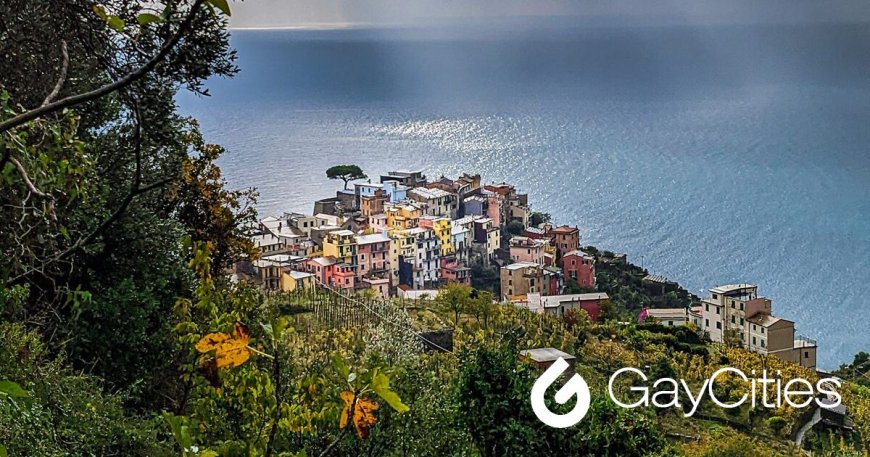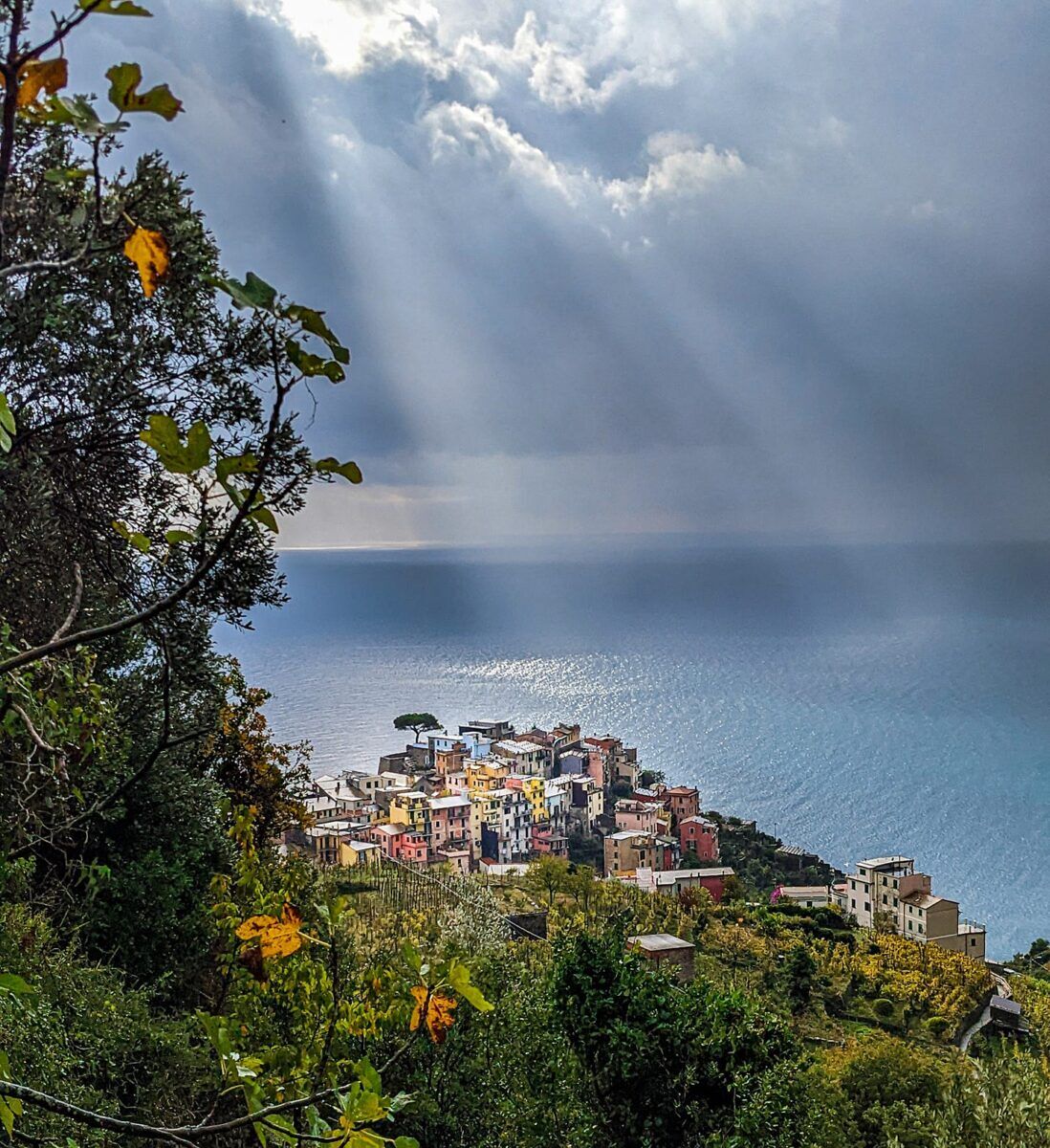Seven surprising things about Italy’s Cinque Terre
It’s one of Italy’s most popular tourist destinations; you’d think we’d all know how to pronounce it by now.


“Cinque Terre” is pronounced “chink-weh tear-eh,” but even after living here a month, I’m not entirely sure I’m pronouncing it right.
This is just one of the ways this area of the world has surprised me. After all, it’s now one of Italy’s most popular tourist destinations; you’d think we’d all know how to pronounce it by now.
Cinque Terre means “five lands,” and it’s the regional name for the string of five small villages — Monterosso al Mare, Vernazza, Corniglia, Manarola, and Riomaggiore — nestled in and on a series of rocky canyons and outcroppings along a rugged coastline on the Italian Riviera. But it also refers to the surrounding area, now a national park.
Pack your bags, we’re going on an adventure
Subscribe to our weekly newsletter for the best LGBTQ+ travel guides, stories, and more.
Subscribe to our Newsletter today
Here are all the other ways this area surprised us.
1) Its beauty somehow lives up to the hype
Over the last thirty years, the Cinque Terre has gone very big-time. These villages were even the inspiration for the fictional Italian village of Portorosso in the recent Pixar movie Luca.
This area now includes some of the most photographed — and supposedly most photogenic — spots in all of Italy.
It was hard not to come here without high expectations of incredible beauty. And in travel, high expectations often lead to vague disappointment.
I wasn’t disappointed.

Even though I’d seen hundreds of photographs of this area, I still found wonders everywhere I turned.
This is partly because the villages are built in an unlikely way: up the sides of narrow valleys or perched precariously on top of rocky outcroppings. As a result, you climb over a hilltop or round a corner and — voila! — you’re facing a dramatic gorge crammed with colorful buildings.
Then, you can see things in a different light, or look a bit closer, and see even more interesting things.

But as I said, the Cinque Terre is more than just the five villages — it also includes the stunning coastline and terraced hillsides surrounding them.

With all these pictures, now I’ve created expectations for you. But if you ever come, I bet the Cinque Terre will still exceed them.
2) But the Cinque Terre is like visiting a museum or theme park
I loved walking around the villages of the Cinque Terre — and taking pictures, obviously.
But I didn’t necessarily fall in love with them.
I think that’s because unlike many other places we’ve visited in our travels, the villages of the Cinque Terre no longer feel like places where “real” people live.
It all feels like a museum or theme park. I’m sure almost every aspect of the Cinque Terre is coordinated and regulated, and it’s now all very frozen in time. The five villages are connected by a sleek, modern train system, which is very convenient but makes the area feel even more like Disneyland.

Most other places we’ve lived as nomads feel very different — more like proper communities, with less charm, sure, but more randomness, chaos, and change. They also have more locals — from parents with babies in strollers to old folks sitting on benches shooting the breeze.
Sure, there are locals in the Cinque Terre, but they’re mostly workers catering to tourists — or subsidized farmers on display for tourists.
As for the tourists, well, there are hordes of them, disembarking from the trains and ferries, but they’re mostly interchangeable. Naturally, the locals are all wary. This is not the place to come to make new local Italian friends.
Brent and I loved exploring the Cinque Terre, but we were always happy to return to Levanto, the small town just outside the Cinque Terre where we lived for the month.
Levanto wasn’t nearly as photogenic, but it felt like a real town, with Italians of all ages talking, smoking, and laughing, groups of kids going to school in the morning, and even the occasional shouting match between Italian men arguing over who knows what.
3) The hiking is incredible
The Cinque Terre is a UNESCO World Heritage Site and became Italy’s first national park in 1999. Like all good national parks, it’s loaded with hikes.
The most famous hike is the Verde Azzurro, or Blue Trail, which connects all five villages in four different legs. (But two legs are currently closed, and the other two require an access fee most of the year.)
What I didn’t expect were all the other hikes—48 different hiking trails stretching some 120 kilometers and covering almost the entire area.

These hikes are not always easy. Then again, the villages are famous for being nestled in rocky canyons and separated by tall headlands. That makes for some surprisingly steep climbs and descents — and sometimes awkwardly spaced stone steps.
But good hikes are mostly about the journey, not the destination, and these trails offer incredible views of the park’s forests, terraced vineyards, rocky hills, ocean, and villages of the Cinque Terre from different angles.
And because these hikes are often so difficult, they also offer surprising satisfaction once you reach the end.

4) The train and ferry system is amazing
Earlier, I complained that the sleek, modern trains made Cinque Terre feel a bit like an amusement park.
That’s true, but the trains and the ferry system also make getting around astonishingly easy. That’s because Trenitalia has created a line that specifically runs between Levanto and La Spezia — the towns at either end of the Cinque Terre — stopping at all five of the Cinque Terre villages along the way.

Fast and frequent trains make it easy to move between towns.
While the trains are more convenient, the ferry system is also worth doing because the view of the Cinque Terre from the water will give you a new appreciation for how intricately and expertly these villages meld into their environment.
5) The Cinque Terre is crowded. Man, is it crowded
We spent a month here in the shoulder season of October and November, but it was still really crowded, especially on sunny days.
If it’s this crowded at this part of the year, I can only imagine what it’s like in summer.

There’s a theory that climate change is altering travel patterns: because summer is hotter than before, Europe’s “high season” is moving deeper into the fall, which is staying warmer longer.
But it’s also true that the Cinque Terre has been discovered, big-time. And since they’re not making any new old Italian villages, they have to cram more and more people into the same five existing ones.
6) But! All this tourism kinda saved the Cinque Terre
We’ve established the Cinque Terre is popular, right? Its current insane popularity might even be the result of a single travel writer — *cough* Rick Steves *cough* — who began banging on the Cinque Terre drum back in the 90s.
And if travel writers hadn’t sent these hordes of visitors flocking here, the villages would now be five sleepy, charming, beautiful Italian villages, except with no tourists, right?

Wrong! The fact is, before Rick Steves brought his hordes of tourists, this area was in very rapid decline. Most of the terraced vineyards were no longer economically viable and had long since been abandoned — creating some very dangerous conditions, frankly — and locals were leaving in droves.
7) Speaking of those terraces? They really are amazing
The terraces on the steep hillsides of the Cinque Terre date back to the Middle Ages, when the locals painstakingly built thousands of kilometers of terraces into the hills to grow grapes and olives — which they did very successfully, in full view of the Mediterranean sun.

But it was incredibly difficult work, and by the end of the 20th century, the vineyards had been almost entirely abandoned.
But I can tell you how they fixed the problem of how labor-intensive it was to farm these terraces: a kind of “monorail” was introduced. Metal tracks now crisscross the mountains, and farmers ride on carts, allowing easy transport of the grape and olive harvest to the roads above and below.

Bottom line? The terraces are back to producing crops and look incredibly beautiful again.
Brent Hartinger and Michael Jensen are a gay “digital nomad” couple — two men who travel the world continuously, living in different countries for anywhere from one to three months at a time. Subscribe to their newsletter at BrentAndMichaelAreGoingPlaces.com.

 Mark
Mark 





